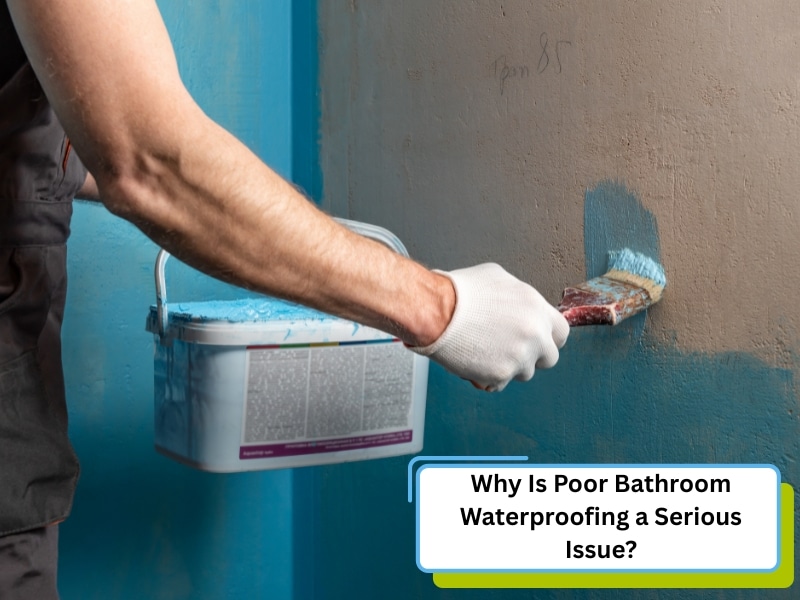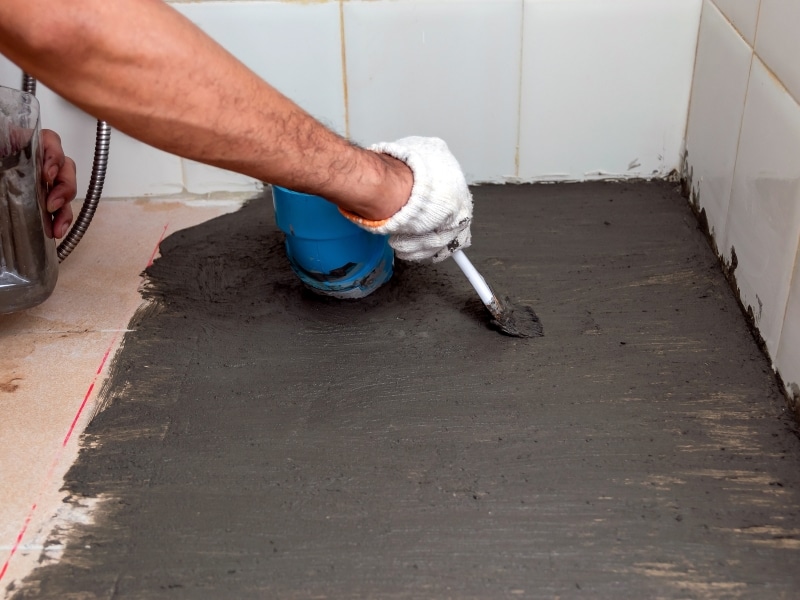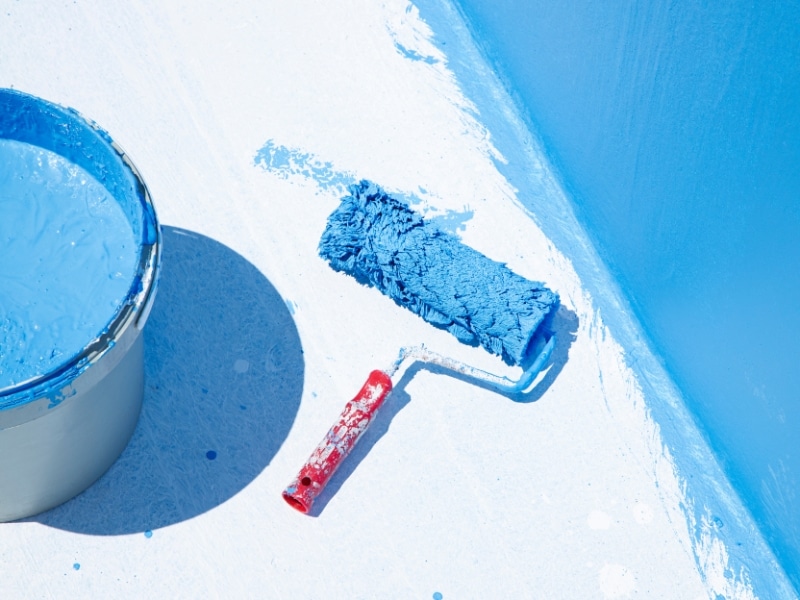Why Is Poor Bathroom Waterproofing a Serious Issue?

Without a doubt, poor bathroom waterproofing is more than just a cosmetic problem—it’s a ticking time bomb. Over time, water seeping into places it shouldn’t can cause structural damage, health risks, and expensive repairs. If you ignore the warning signs, you could be facing not only a soggy bathroom but a much bigger hit to your wallet and well-being. That’s why recognising and addressing waterproofing issues early is so important. This article will explore why poor bathroom waterproofing is such a serious issue, how it affects your home, and what you can do about it.
What is bathroom waterproofing, and why is it important?
Bathroom waterproofing involves applying materials and techniques to prevent water leakage in wet zones like showers, bathtubs, and floors, ensuring your bathroom’s longevity, safety, and integrity.
Here’s why bathroom waterproofing matters:
- Prevents water damage: Waterproofing keeps moisture confined to designated wet areas.
- Stops structural damage: Without proper waterproofing, water seeps into your walls, floors, and ceilings, weakening the structure over time.
- Protects your investment: A waterproof bathroom increases the value and longevity of your home.
- Prevents mould growth: Moisture trapped in non-waterproofed areas creates a breeding ground for mould, damaging surfaces and affecting health.
Waterproofing is a must-do when constructing or renovating your bathroom. It keeps water where it should be and ensures your bathroom remains functional and safe for years.
How does poor waterproofing affect bathroom functionality?
Incorrect waterproofing can severely impact your bathroom. Water can seep into walls and floors, lifting tiles, warping wood, and cracking plaster, making the space uncomfortable, unsafe, and eventually unusable.
Effects of poor waterproofing include:
| Risk | Cause | Impact |
| Slippery surfaces | Excess moisture | Increased fall risk |
| Water damage | Leaked water | Damaged walls, flooring, wood |
| Shower leaks | Escaped water | Pooling around edges |
| Electrical hazards | Water seeping into wiring | Risk of short circuits |
The result is more than just aesthetic damage; it directly impacts your bathroom’s functions, creating inconveniences and potential hazards for everyday use.
What are the signs of poor bathroom waterproofing?
Spotting poor bathroom waterproofing early helps avoid costly repairs. If you notice these signs, inspect your bathroom promptly and consider fixing the waterproofing to prevent further damage.
Signs of ineffective waterproofing include:
- Mould and mildew: If you spot mould growth in your bathroom, it’s a clear sign of moisture getting where it shouldn’t.
- Damp or wet floors: Any water pooling on your bathroom floor can indicate leaks beneath the surface.
- Discolouration of tiles: Dark stains or watermarks on tiles are signs of water penetration.
- Odour of mustiness: A persistent damp smell often means that moisture is trapped, leading to mould or mildew growth.

If these reasons for ongoing shower leaks are left unchecked, they can worsen, leading to more severe structural damage and costly repairs down the track.
When should you check for ineffective waterproofing?
Regularly checking your bathroom’s waterproofing is crucial to prevent future problems. While early detection is key, certain times require a more thorough inspection to address potential issues before they escalate.
Check for waterproofing issues if you notice:
- After renovations: Any time you’ve made changes to your bathroom, such as retiling or installing new fixtures, it’s crucial to check that the waterproofing has been correctly applied or maintained.
- During wet seasons: Increased moisture levels during rainy seasons can exacerbate any waterproofing issues, so it’s a good time to monitor your bathroom for leaks.
- If there’s visible damage: Cracked tiles, peeling paint, or stains could all be signs that your bathroom needs attention.
- When moving into a new home: Before settling in, it’s wise to check the condition of your bathroom to ensure there are no hidden waterproofing issues.
By staying proactive and checking your bathroom at these critical points, you can help maintain its functionality by preventing water damage through proper waterproofing.
Can poor waterproofing lead to health issues?
Yes, and this is often the most underestimated consequence. When waterproofing fails, it creates the perfect environment for mould, which doesn’t just look bad—it can seriously affect your health.
Health risks of poor waterproofing include:
- Mould exposure: Breathing in mould spores can lead to allergic reactions, asthma, and other respiratory issues.
- Skin irritation: Damp environments often lead to skin rashes or irritation, particularly for those with sensitive skin.
- Increased risk of infections: Persistent moisture can cause structural materials to weaken, which in turn may increase the risk of bacteria growth.
Ensuring your bathroom is properly waterproofed is not just about protecting the structure; it’s also about safeguarding your health.
Is bathroom waterproofing only necessary in wet areas?
While wet areas like showers and tubs are obvious candidates, waterproofing should extend beyond just those spaces. Water can and will travel to areas you don’t expect.
Waterproofing is essential for:
- Shower areas: The most obvious place for waterproofing, where water splashes are frequent.
- Flooring: Even in dry areas, it’s important to waterproof the entire bathroom floor, as floors can absorb moisture, leading to issues over time.
- Walls and ceilings: Constant humidity can also seep into these surfaces, causing damage.
- Around fixtures: Areas near toilets, sinks, and bathtubs need waterproofing to avoid leaks and water damage.

Incorporating waterproofing throughout the entire bathroom ensures that all areas remain safe from water-related damage.
Can you fix poor bathroom waterproofing yourself?
Technically, yes—but should you? Probably not. DIY waterproofing might seem like a budget-friendly option, but it often causes more harm than good if not done correctly.
Why you should hire a professional:
| Factor | DIY Fix | Professional Fix |
| Experience | Limited | Extensive |
| Long-term results | Temporary | Lasting |
| Service guarantee | None | Warranty & Cert. |
| Hidden issues | Missed | Identified |
While DIY fixes may seem like a cheaper option, the risk of poor results and future damage makes it far more cost-effective to hire a professional.
Is waterproofing a one-time service or ongoing?
While waterproofing is designed to be durable, it’s not immune to time, usage, or poor installation. Eventually, even high-quality waterproofing will need attention.
Reasons why waterproofing needs ongoing maintenance:
- Wear and tear: Natural usage over time can degrade the waterproofing layers.
- Environmental factors: Exposure to humidity and temperature changes can affect the material.
- Regular inspections: Periodic checks allow you to catch issues early before they worsen.
- Upkeep of sealants: Some sealants need to be reapplied to maintain their effectiveness.
Regular maintenance and checks are necessary to ensure long-lasting protection with quality bathroom waterproofing and to keep your bathroom functioning properly for years to come.
Conclusion
Poor bathroom waterproofing is more than just an inconvenience; it’s a serious issue that can lead to structural damage, health problems, and expensive repairs. It’s crucial to ensure that your bathroom is properly waterproofed from day one, and to maintain it regularly to avoid the consequences of leaks and water damage.Noticed signs of water damage or leaks in your bathroom? Explore what Leaking Shower Repairs Sydney can do for you.
